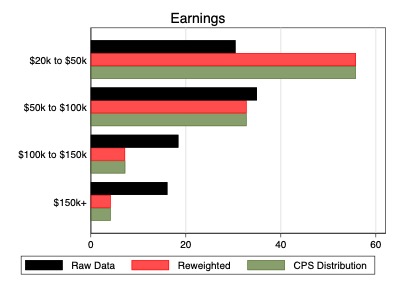About our survey and respondents
About our survey and respondents
The motivation for establishing the Survey of Working Arrangements and Attitudes was to collect detailed information on these topics given the dramatic impact of the COVID-19 pandemic on the economy and working arrangements. We are particularly interested in workers’ experiences and attitudes regarding working arrangements, and in forecasting how working arrangements might evolve in the longer-term after the end of COVID-19. We hope our data and research will be useful to economists, businesses, and policy makers.
SWAA respondents are working age persons in the United States who report work-related earnings over a threshold. Between May 2020 and March 2021 we used a $20,000 threshold for 2019 earnings. Between April and September 2021 we transitioned to a threshold of $10,000 in 2019. Between January and March 2022 we transitioned to a $10,000 threshold for the prior year.
The first survey wave was conducted in May 2020 and data collection continues on a monthly basis. Each survey wave collects between 2,500 and 5,000 responses. Initial waves were 2,500, but we transitioned permanently to 5,000 monthly responses in April 2021 and later to 10,000 responses in 2022.
Our research team design the survey questions and then use commercial survey providers to field the survey on our behalf via the internet. These providers recruit respondents via panel aggregators who have access to potential respondents from various sources. Potential respondents sign up to receive internet surveys generally and then receive invitations to individual surveys. They do not sign up for our survey specifically. Because we use these commercial providers we do not interact directly with respondents. In our survey questionnaires, we do not ask for any private identifying information, nor are we otherwise able to identify our respondents.
After re-weighting our data to match the share of individuals in the Current Population Survey (CPS) of a given age, sex, educational attainment, and earnings level our data matches the population in the CPS along these dimensions. The reweighted distribution is also not far off for other variables such as the industry of the current or most recent job and the Census Division (i.e. region).






